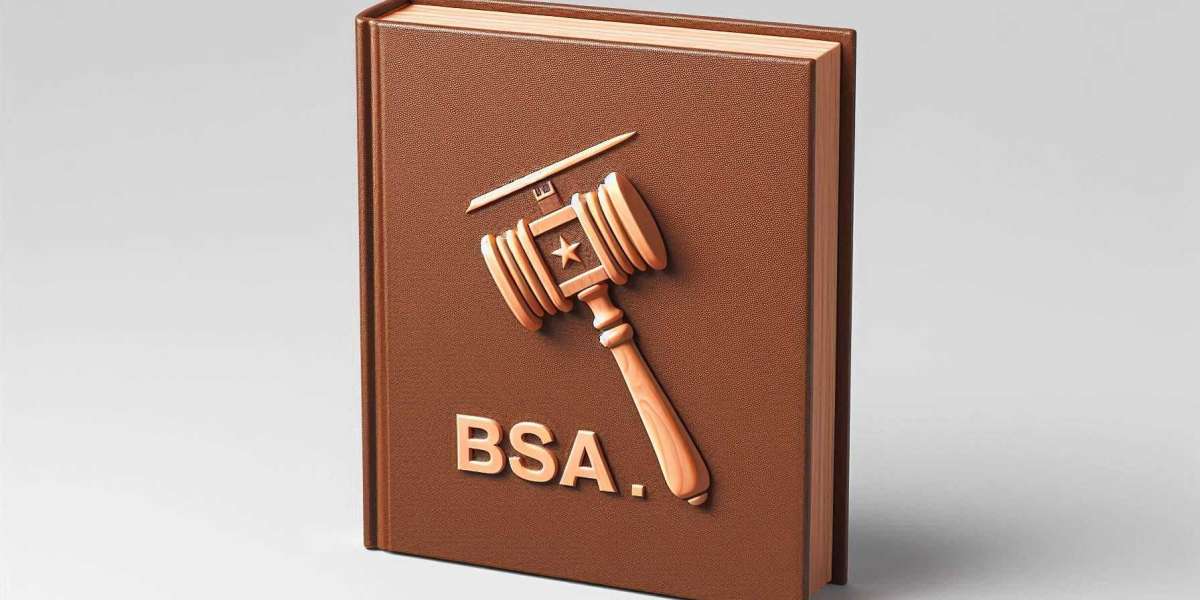In 2023, India introduced a major overhaul of its colonial-era criminal laws by replacing the Indian Evidence Act of 1872 with the Bharatiya Sakshya Adhiniyam, as part of a larger legislative package that also replaced the Indian Penal Code and the Code of Criminal Procedure. The Bharatiya Sakshya Adhiniyam is a foundational shift in how evidence is presented, admitted, and evaluated in criminal trials in India.
This new law reflects the needs of a modern society and digital age while aligning with constitutional values and the principle of fair trial. As courts, prosecutors, defense lawyers, and investigators begin implementing the new provisions, the impact of the Bharatiya Sakshya Adhiniyam on criminal trials is becoming a topic of national legal interest.
In this blog, we will explore the key features of the Bharatiya Sakshya Adhiniyam, how it departs from its colonial predecessor, its implications for criminal trials, and the role of LexisNexis as a trusted resource for understanding this transformative legal framework.
Why Replace the Indian Evidence Act?
The Indian Evidence Act, 1872, drafted during British rule, governed the admissibility and relevance of evidence in Indian courts for over 150 years. While it served its purpose well, several of its provisions became outdated in the face of technological progress and evolving standards of justice. It had limited scope for electronic evidence, lacked clarity on digital records, and reflected a colonial mindset that no longer matched India’s constitutional and democratic ethos.
Recognizing these challenges, the Bharatiya Sakshya Adhiniyam was introduced to create a more inclusive, technology-aware, and victim-sensitive legal framework for evidence, crucial in both civil and criminal trials.
Objectives of the Bharatiya Sakshya Adhiniyam
The Bharatiya Sakshya Adhiniyam aims to:
- Make the law of evidence technology-neutral and future-ready
- Simplify and reorganize evidence law into concise and comprehensible provisions
- Ensure justice delivery is faster through digital processes
- Reinforce constitutional safeguards such as the right against self-incrimination and the presumption of innocence
- Protect the rights of victims and vulnerable witnesses in criminal trials
Structure and Salient Features
The Bharatiya Sakshya Adhiniyam contains 170 sections, compared to 167 in the old Evidence Act. While many concepts remain the same, significant changes reflect a more modern and efficient approach to criminal justice.
Some key highlights include:
- Recognition of Electronic Evidence: The Act provides comprehensive treatment of electronic records, digital signatures, server logs, mobile data, CCTV footage, and cloud-based documents.
- Admissibility Simplified: The process of determining admissibility of digital evidence is clarified to reduce ambiguity in interpretation.
- Witness Protection Measures: The law gives importance to protection of vulnerable witnesses, including child victims, rape survivors, and persons with disabilities.
- Presumptions and Reverse Burden: New sections allow for presumptions against the accused in specific offences involving women and children, subject to safeguards.
- Clarity on Secondary Evidence: Provisions clarify when secondary evidence, including scanned or digitized copies, can be used in court.
- Digital Certification: The Act introduces the concept of digital certification under prescribed conditions, aligning with provisions of the Information Technology Act, 2000.
- Uniform Application: The law aims to remove regional variations in evidentiary procedures by laying down uniform rules applicable across jurisdictions.
Impact on Criminal Trials
1. Stronger Use of Digital Evidence
The most visible impact of the Bharatiya Sakshya Adhiniyam on criminal trials is the elevation of electronic evidence to the same status as documentary evidence. Courts are now explicitly empowered to consider WhatsApp chats, emails, server records, and call data as primary evidence, provided they meet certification requirements.
This means police investigations and prosecutions can now be faster and more comprehensive. The law also provides a better framework for defense lawyers to challenge fabricated or manipulated digital data.
LexisNexis commentaries have already begun analyzing how this shift aligns with recent Supreme Court judgments and global best practices in digital evidence law.
2. Faster Adjudication of Cases
By removing procedural ambiguities and enabling easier admission of digital and documentary evidence, the Bharatiya Sakshya Adhiniyam reduces delays at the evidence stage. Sections related to proof, relevancy, and burden of proof have been revised for clarity.
For example, in cybercrime or financial fraud cases, evidence often includes digital trails—transaction logs, blockchain records, or video recordings. These can now be admitted with standardized procedures, leading to quicker trials.
3. Balancing Accused’s Rights with Victim Protection
While the Act retains the foundational criminal law principle of “innocent until proven guilty”, it introduces important changes that empower courts to draw legal presumptions in certain contexts—particularly crimes against women and children.
However, this is balanced with procedural safeguards and the right to rebut, in compliance with Article 21 of the Constitution.
For instance, the court may presume guilt if the prosecution shows digital evidence of stalking or threats, but the accused is allowed to produce contrary evidence. The Act thus ensures justice while avoiding misuse of presumptions.
4. Enhanced Role for Forensics
The Bharatiya Sakshya Adhiniyam recognizes the growing importance of scientific and forensic evidence in modern trials. DNA reports, ballistic analysis, fingerprint comparisons, and toxicology findings can now be presented under well-defined evidentiary rules.
This boosts the credibility of criminal trials, especially in serious offences like murder, sexual assault, or terrorism. Courts will rely more on objective forensic science and less on unreliable oral testimony.
Legal professionals using LexisNexis publications can access real-time updates on how forensic reports are interpreted under the new Act and the emerging case law.
5. Witness Testimonies Made More Effective
Witness intimidation and delayed depositions have been persistent hurdles in Indian criminal trials. The new law provides courts with tools to:
- Allow video conferencing for recording statements
- Enable in-camera proceedings for sensitive cases
- Use audio-visual means to protect child witnesses
These reforms reduce trauma for witnesses and improve the quality of depositions, which are often crucial in securing convictions or acquittals.
Implementation Challenges
While the Bharatiya Sakshya Adhiniyam promises efficiency and modernization, several challenges remain:
- Infrastructure Gaps: Not all courts in India are fully equipped to handle digital evidence or support video testimonies.
- Training of Stakeholders: Judges, prosecutors, and police need continuous training to understand how digital evidence should be collected, preserved, and presented.
- Data Privacy and Security: With increased use of digital data, concerns about data breaches and the misuse of personal information have become more significant.
- Interpretational Uncertainty: As this is a new law, courts will take time to evolve consistent interpretations. Legal resources like LexisNexis play a crucial role in bridging this gap by offering expert commentary and curated case law.
LexisNexis: A Reliable Companion for Criminal Law Practitioners
As the legal landscape transitions from colonial codes to the Bharatiya Nyaya Sanhita, Bharatiya Nagarik Suraksha Sanhita, and Bharatiya Sakshya Adhiniyam, there is an urgent need for trusted legal literature.
LexisNexis, a renowned publisher of legal texts in India and globally, offers:
- Updated Bare Acts with annotations and cross-references
- Authoritative commentaries on the Bharatiya Sakshya Adhiniyam
- Practice manuals and digests for criminal law professionals
- Judiciary preparation materials aligned with the new criminal codes
- Online access and e-books for instant reference
Whether you are a criminal defense lawyer, a public prosecutor, or a law student, LexisNexis provides clarity, accuracy, and timely updates that are essential to working with the new legal regime.
Conclusion
The Bharatiya Sakshya Adhiniyam marks a transformative shift in the way evidence is treated in Indian criminal trials. By incorporating digital evidence, streamlining procedures, protecting witnesses, and balancing rights, the Act aligns Indian jurisprudence with global standards of justice.
For criminal trials in India, this means quicker hearings, fairer processes, and improved public trust in the legal system. However, successful implementation will depend on training, infrastructure upgrades, and consistent judicial interpretation.
Legal professionals must stay updated, and resources like LexisNexis provide the tools and insights necessary to navigate this new chapter in Indian criminal law.








